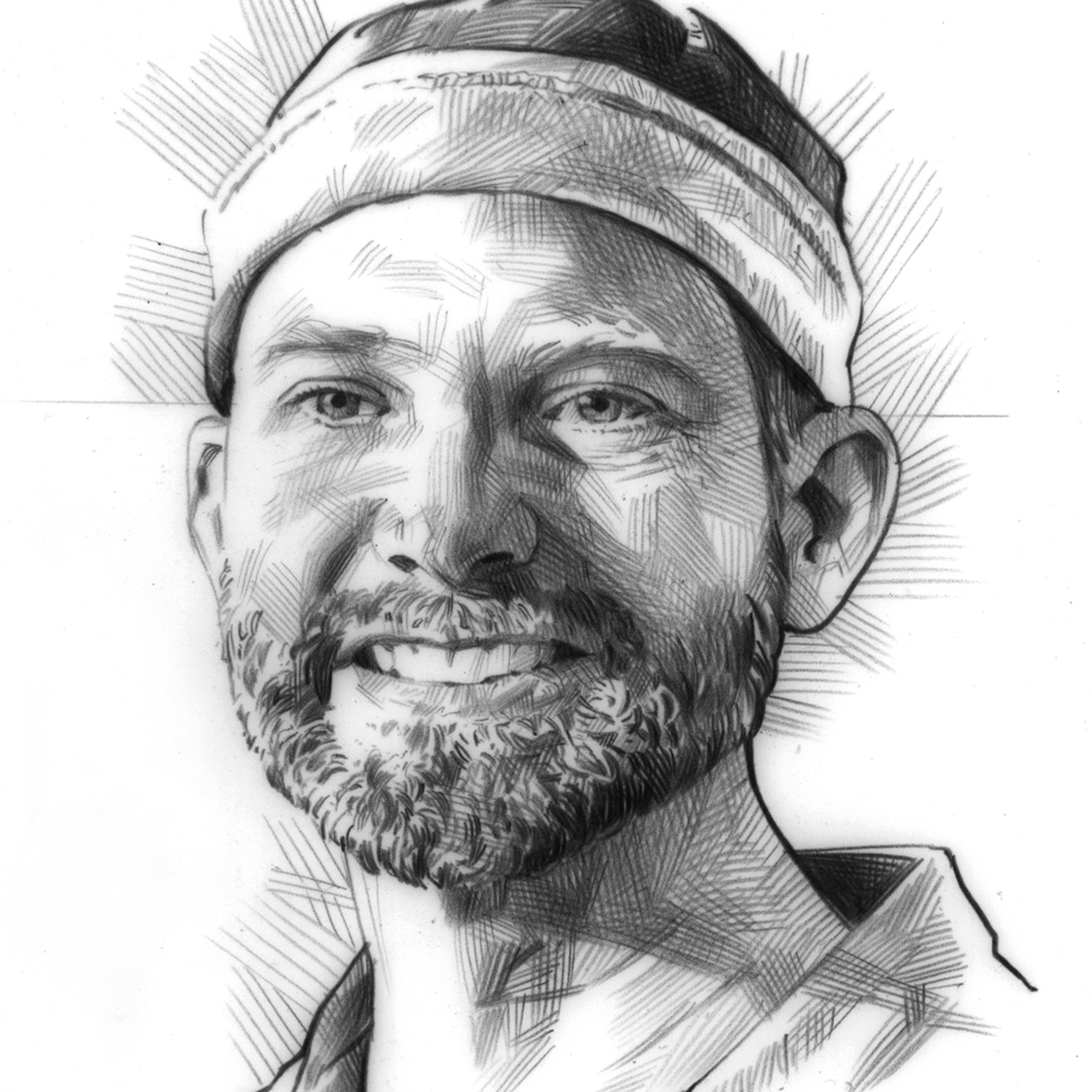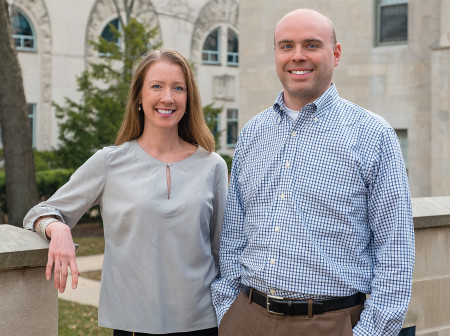The old masters painted with pigments derived from a variety of minerals, metals and plant-based dyes. I paint with iron oxide extracted from toxic sludge that seeps out of Appalachian coal mines and pollutes Ohio rivers. Yet the pigment creation process that connects us over centuries is remarkably similar. It’s a process that combines science and art and, in my particular case, advocacy as well. Thanks to my Northwestern education and a serendipitous collaboration with a scientist, I’ve been able to connect across time with 17th-century artists to help turn toxic waste into a sustainable paint source.
As a graduate student at Northwestern I was fascinated with the old master painters — particularly the Dutch masters like Vermeer and Rembrandt — who were part alchemists, developing new processes to create colors and effects for their beautiful paintings.
Early on I was interested from a historical distance. It was my study with Northwestern art theory and practice professors like James Valerio, Bill Conger and Judy Ledgerwood — all of whom had deep knowledge of those painters and the classical old pigments — that got me deeply invested in connecting the masters with contemporary practices.
While I was working toward an MFA, my professors encouraged me to incorporate my new paint knowledge into classes I assisted or taught — what a certain pigment really is, where it’s derived from, how it was made historically and how it’s made now. I’ve been teaching versions of my “pigment history” ever since: helping students make paints while talking about the process of creation and aspects of preservation.
After I moved to Ohio, a friend of mine introduced me to a scientist, a chemical engineer who knew nothing about my art but liked that I understood a lot about the old masters and their paints. He was studying streams all over Ohio that are polluted by runoff from old coal mines, and he wanted me to help him take this toxic iron sludge and see if we could turn it into viable paint.
When abandoned, many coal mines fill with water, and the oxygen and water react with mineral surfaces that have been buried for 300 million years. When sulfides are present — and they are common in Appalachian coal deposits — very high concentrations of sulfuric acid and iron are produced. In one local seep, about 1 million gallons of polluted water enter Sunday Creek every day — it’s like junking a car in the stream daily. This seep has been active and untreated for 40 years and is expected to continue for another 150 years.
Producing iron sludge from the water was straightforward, but connecting the chemistry to pigment properties that paint companies value — like hiding power, tinting strength and hue — was elusive. However, thanks to my hands-on experience and my Northwestern professors’ insights, I was able to turn powdered iron minerals into a working paint for the first time.
Recently I have also developed a relationship with Gamblin Artists Colors, a large paint company that has agreed to produce a batch of 500 tubes of oil paint using our pigment. These paints will be distributed to artists around the world and the resulting artworks curated into a touring exhibition.
With little funding and lots of skeptics, we are starting to refine a process that can treat and restore a stream for aquatic life, while collecting iron pigment that can be sold to offset operational costs. Based on our best estimates, we should be able to create a few jobs and produce a small profit, while eliminating a perpetual pollution source. We are currently securing funding for a pilot facility to demonstrate the process at a field site and to begin producing large quantities of pigment. Hopefully in another 10 years we will have started a new industry in southeast Ohio that turns pollution into paint while restoring our watersheds.
My professors helped me bring the old ways to life — to connect my practice with the old masters and their processes — and it’s that direct Northwestern lineage that helps me transform acid into art.
John Sabraw ’97 MFA is an artist, environmentalist and professor of art and chair of painting and drawing at Ohio University.




Reader Responses
No one has commented on this page yet.
Submit a Response